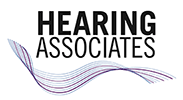
Sometimes when an individual has a hard time hearing, somebody close to them insultingly suggests they have “selective hearing”. When your mother used to accuse you of having “selective hearing,” she was suggesting that you paid attention to the part about chocolate cake for dessert and (perhaps purposely) ignored the bit about doing your chores.
But actually selective hearing is quite the ability, an amazing linguistic task performed by teamwork between your ears and brain.
Hearing in a Crowd
This scenario potentially seems familiar: you’re feeling burnt out from a long workday but your friends all really want to go out for dinner and drinks. And of course, they want to go to the noisiest restaurant (because they have amazing food and live entertainment). And you spend the entire evening straining your ears, attempting to follow the conversation.
But it’s challenging, and it’s taxing. And it’s an indication of hearing loss.
Perhaps, you rationalize, the restaurant was just too noisy. But no one else seemed to be having difficulties. It seemed like you were the only one having trouble. Which makes you think: Why do ears with hearing impairment have such a difficult time with the noise of a crowded room? Just why is it that being able to hear in a crowd is so quick to go? Scientists have started to uncover the answer, and it all begins with selective hearing.
How Does Selective Hearing Function?
The scientific name for what we’re broadly calling selective hearing is “hierarchical encoding,” and it doesn’t happen in your ears at all. This process almost completely happens in your brain. At least, that’s in line with a new study carried out by a team at Columbia University.
Ears work like a funnel as scientists have known for some time: they compile all the signals and then forward the raw information to your brain. That’s where the real work happens, particularly the auditory cortex. Vibrations caused by moving air are interpreted by this part of the brain into recognizable sound information.
Because of comprehensive research with MRI and CT scans, scientists have known for years that the auditory cortex plays a significant role in hearing, but they were clueless with regards to what those processes actually look like. Scientists were able, by making use of unique research techniques on individuals with epilepsy, to get a better picture of how the auditory cortex discerns voices in a crowd.
The Hearing Hierarchy
And the information they discovered follows: there are two regions of the auditory cortex that accomplish most of the work in allowing you to key in on distinct voices. And in noisy environments, they enable you to separate and enhance specific voices.
- Superior temporal gyrus (STG): Sooner or later your brain needs to make some value based decisions and this happens in the STG once it receives the voices that were previously differentiated by the HG. Which voices can be safely moved to the background and which ones you want to pay attention to is determined by the STG..
- Heschl’s gyrus (HG): The first sorting phase is managed by this region of the auditory cortex. Heschl’s gyrus or HG processes each unique voice and separates them into distinguishable identities.
When you have hearing impairment, your ears are lacking specific wavelengths so it’s harder for your brain to distinguish voices (low or high, depending on your hearing loss). Your brain can’t assign individual identities to each voice because it doesn’t have enough data. It all blurs together as a consequence (which makes discussions tough to follow).
A New Algorithm From New Science
Hearing aids already have features that make it less difficult to hear in loud situations. But hearing aid makers can now incorporate more of those natural functions into their algorithms because they have a greater idea of what the process looks like. For instance, you will have a greater capacity to hear and comprehend what your coworkers are saying with hearing aids that assist the Heshl’s gyrus and do a little more to identify voices.
Technology will get better at mimicking what occurs in nature as we learn more about how the brain works in combination with the ears. And that can lead to improved hearing outcomes. Then you can concentrate a little more on enjoying yourself and a little less on straining to hear.
